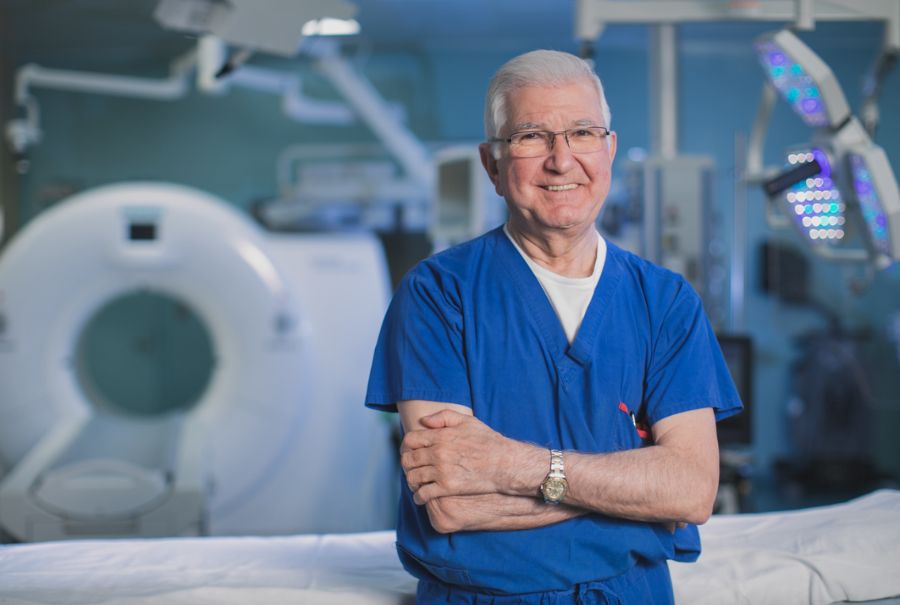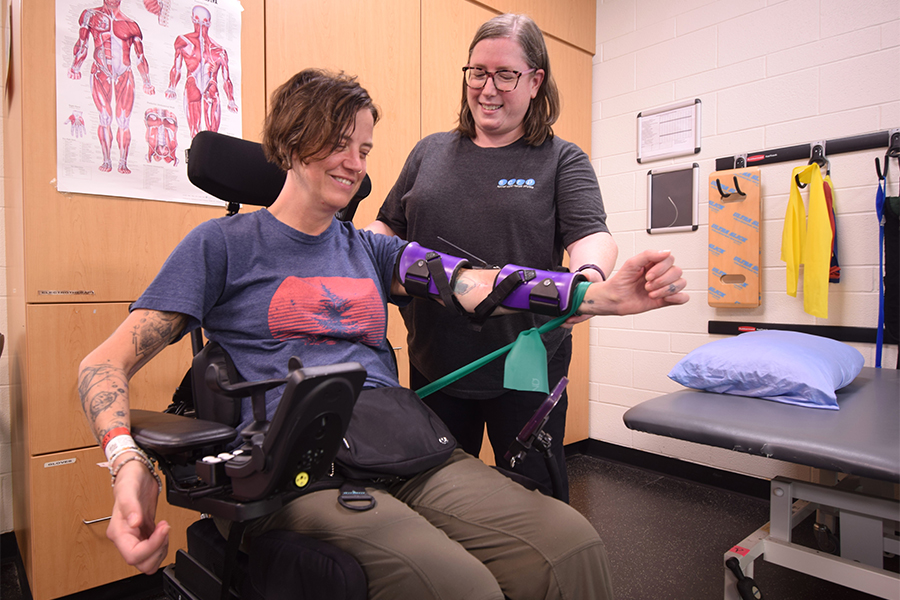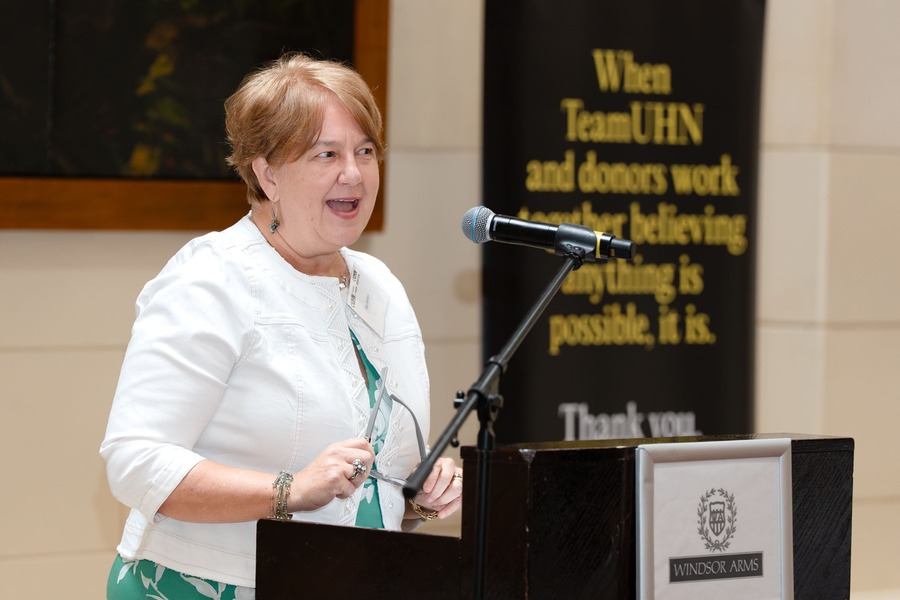Name: Dr. Alon Vaisman
Title: Infectious Diseases and Infection Control Physician
Number of years working in health care: 12
I was born and raised in: Toronto
I decided to get into health care because I wanted to help people, and I enjoyed science and biology. In high school, I volunteered at Mount Sinai Hospital and I ended up doing about 600 hours because I enjoyed it so much, to be in a volunteer position in various parts of the hospital. So that’s really what began my interest in medicine as a career. Early in my undergrad, I did some additional work in the hospital setting. That experience of volunteering along with my interest in biology led me to apply for medical school.
As an infectious disease physician I see patients in the clinic, and when other physicians request a consultation regarding a specific infectious disease. What I like about working in infectious diseases is that we generally don’t do procedures with our hands; we get called in to consult for things that are more complicated and cerebral. We deal with infections in all parts of the body: brain infections, bone, joints, skin, heart, lungs – everything. We also cover Mount Sinai Hospital, which includes obstetrical associated infections. We also assess tropical infections and systemic infections like HIV.
Infection prevention and control (IPAC) is a subspecialty of infectious diseases where we are focused on the acquisition and transmission of infections in the hospital setting. Unfortunately, when patients come to the hospital, they are at risk of acquiring infections either from the environment, from health care workers, from other patients or from visitors. Because of the complicated nature of health care, there are many ways patients can pick up organisms or pathogens. Our job is to prevent that and – if someone does pick something up – to prevent it from being transmitted to one another. Additionally, some patients come to the hospital because they have an infection, so our job is to prevent that from being passed on to visitors, staff and other patients.
A project that I am passionate about involves preventing “surgical site infections.” These are infections that occur after a patient undergoes a surgical procedure. It is the most common type of hospital-acquired infection and has big impacts on patients, including prolonged hospital stays and the need for additional treatments and appointments. In addition to the impact on patients, these infections are estimated to cost about $3.5 billion a year in America, just to give a sense of the scale of this issue.
There is very strong evidence that giving patients antibiotics at the time of their surgery prevents surgical site infections. The problem is that there can be things within a patient’s medical history that impact whether they will receive the right dose, the right antibiotic and the right treatment duration. For example, approximately ten per cent of people believe they have a penicillin allergy. However, for approximately 90 per cent of these patients, the allergy label is not appropriate. This leads to people receiving a more toxic and less effective antibiotic as an alternative when a penicillin-related drug would have been the better option. Therefore, one important way to improve the way we prescribe antibiotics prior to surgery is to make sure that a patient’s allergy label is accurate, so we can give them the most appropriate antibiotic.
We are developing a tool called OPTIMUS-PRO that uses an algorithm to assist patients in getting the right treatment based on their needs. So, using the previous example, in the case of a noted penicillin allergy, the tool would prompt the care team to ask screening questions – and perform a skin test if necessary – to determine if a patient has been mislabeled with a penicillin allergy. OPTIMUS-PRO would also take into consideration factors like a patient’s weight, the type of surgery, kidney function, or whether the patient has been infected with antibiotic-resistant bacteria. We have developed the algorithm and installed it in UHN’s EPIC system. Now, we’re studying to see how this algorithm has improved antibiotic ordering at UHN to prevent surgical site infections. This algorithm is the result of multidisciplinary work with pharmacy (Mark McIntyre) anesthesia (Dr. Tariq Esmail), nurses, managers, and educators.
Our ultimate goal is to develop this tool as a mobile application and online tool. This would make it highly portable and accessible to hospitals around the world. We are looking for opportunities for support to help us achieve this algorithm’s full potential.
COVID-19 has affected me in a number of ways. The IPAC department underwent a massively stressful time. It was hugely impactful on me in that way, the workload and constantly answering emails at all hours of the day. But throughout that, it has also led to a lot of collaborative work, research and awareness about IPAC principles. Before 2020, not many people were aware of IPAC, so it was surreal to hear people talking in the media about masks, hand hygiene, transmission dynamics of infectious diseases – things we talk about every day in IPAC.
One of the things I love most about my job is the collaborative aspect and how you get to work with teams from every part of the hospital. In IPAC and infectious disease, what’s really rewarding is that we’re constantly working with other people. Within our IPAC team for example, we have doctors, managers, former nurses, epidemiologists, and nurse practitioners. So even within that team it’s multidisciplinary, but then IPAC and infectious disease also interacts with every part of the hospital. The COVID-19 pandemic really put us in touch with so many teams and it was interesting to learn about all these things that were going on that we didn’t know about. For example, we collaborated with physiotherapists at the Bickle Centre doing specialized physiotherapy, anesthesiologists developing novel PPE, and various outpatient clinics to develop new IPAC practices for COVID-19. It was very nice to work with people, talk to them, and learn about what they’re working on. We learned about so many interesting projects in transplant, oncology, and so many other different areas.
One of the most incredible things I have seen at work is seeing how different departments responded to the COVID-19 pandemic. Their responses, you would call them heroes, truly. For example, three departments in particular stepped up in a major way during the beginning of the pandemic: Emergency, General Internal Medicine, and the Intensive Care Unit. The physicians, nurses, allied health professionals and everyone on those teams responded incredibly. With very little fanfare, they stepped up in a major way. You could tell that for the teams as a whole, there wasn’t a question of “if we’re doing this;” their response was “We’re doing this.”
Something that has brought me joy recently is looking back and really appreciating what the people in the hospital accomplished throughout the COVID-19 pandemic. Everyone went through so much, but reflecting on it gives me a lot of pride in what we did. Looking back on it, it was awful, but it was very fulfilling to be a part of it.
My favourite book is Goodnight Moon. I’ve read it probably a hundred times with my two young children and I think it’s genuinely very smart. It does so much with just a few words and the imagery, and to me, it’s the perfect children’s book.


